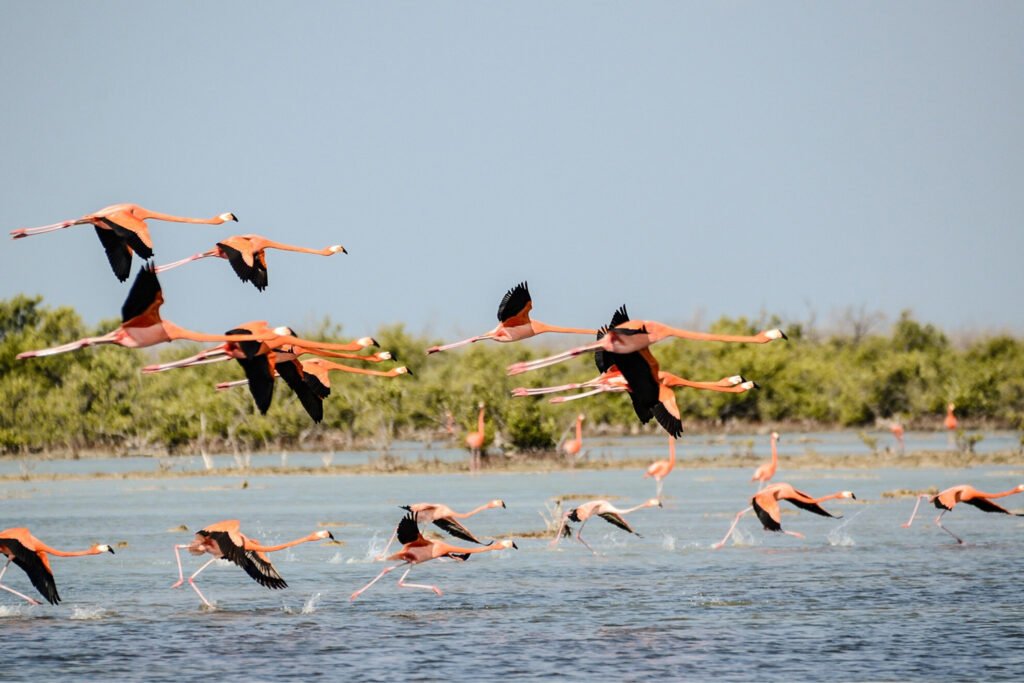How do birds contribute to ecosystems without us even noticing? These winged wonders play vital roles in maintaining ecological balance, assisting in everything from pollination to pest control. Birds like hummingbirds and sparrows significantly contribute to plant reproduction and biodiversity. Moreover, their role as natural pest controllers keeps pest populations in check, reducing reliance on chemical pesticides. Understanding birds’ contributions helps in achieving a healthier ecosystem. Delve into how birds are not just mere bystanders in nature but are, in fact, integral contributors to the health and harmony of ecosystems.
Birds as Natural Pest Controllers
Birds play an essential role in maintaining ecosystem balance through their predatory activities, effectively controlling pest populations. By feeding on insects, rodents, and other small animals, birds help prevent pest outbreaks that could otherwise lead to significant agricultural and ecological problems. This natural form of pest control is not only environmentally friendly but also reduces the reliance on chemical pesticides, which can have harmful side effects on non-target species and human health.
Bird species and their specific pest control contributions include:
- Barn Swallows: Known to consume up to 60 insects per hour, effectively reducing insect populations in agricultural areas.
- Barn Owls: Predators of rodents, they help control populations on farms, preventing crop damage and disease spread.
- Western Bluebirds: Prey on insects in vineyards and farms, assisting in maintaining healthy plant growth.
- Hawks: Predate on small mammals and insects, balancing populations in various habitats.
- Chickadees: Feed on insects and larvae, contributing to pest management in gardens and forests.
| Bird Species | Pest Controlled |
|---|---|
| Barn Swallows | Insects |
| Barn Owls | Rodents |
| Western Bluebirds | Insects |
| Hawks | Small mammals, insects |
| Chickadees | Insects, larvae |
The benefits of natural pest control provided by birds extend beyond immediate pest population reduction. For ecosystems, this balance supports biodiversity by allowing a variety of plant and animal species to thrive without the overuse of pesticides. For agriculture, the presence of avian pest controllers can lead to more resilient crops, reduced chemical input costs, and enhanced sustainability. This symbiotic relationship between birds and their environments underscores the importance of conserving bird populations to maintain ecological harmony and agricultural productivity.
Birds as Environmental Health Indicators
Birds serve as critical bioindicators of ecosystem health, offering insights into broader environmental changes. Changes in bird populations often reflect shifts in habitat conditions, climate change impacts, and pollution levels. Because birds are sensitive to environmental alterations, they act as early warning systems, signaling potential ecological problems before they become apparent through other means.
One example of birds as indicators is the decline in raptor populations, which has historically pointed to issues with pesticide use, particularly the effects of DDT. Similarly, seabird population changes have highlighted shifts in ocean health and fish stock availability. In urban areas, the presence or absence of certain bird species can indicate air quality levels and the overall health of urban ecosystems.
Bird monitoring programs play a pivotal role in identifying and understanding these changes. Organizations conduct regular surveys and track bird populations to gather data that informs conservation strategies. These programs are vital for detecting trends in bird populations, which in turn guide efforts to mitigate environmental degradation and promote ecological balance. By monitoring birds, conservationists can develop targeted initiatives to protect both avian species and their habitats, ensuring the continued provision of the ecosystem services birds offer.
Final Words
Birds significantly contribute to ecosystems as pollinators, seed dispersers, pest controllers, and environmental health indicators. Their ecological roles are crucial in promoting biodiversity and maintaining balance within food webs and nutrient cycles. Conservation efforts are paramount in protecting bird populations and their habitats from threats such as habitat loss and climate change. By taking action to support bird-friendly environments, individuals can positively impact both birds and ecosystems. Engaging in these efforts not only aids in conservation but also enhances the natural world for future generations.
FAQ
Q: Why are birds important to humans and ecosystems?
A: Birds play vital roles in ecosystems by pollinating plants, dispersing seeds, and controlling pests. They also contribute to biodiversity and serve as indicators of environmental health, impacting both natural ecosystems and agriculture positively.
Q: What would happen to the ecosystem without birds?
A: Without birds, ecosystems would suffer from decreased pollination and seed dispersal, leading to reduced plant diversity. Pest populations would rise, potentially harming crops, and nutrient cycling would be disrupted, affecting soil health.
Q: How do birds contribute to biodiversity and ecosystem health?
A: Birds enhance biodiversity and ecosystem health by maintaining plant genetic diversity through pollination, aiding in seed dispersal, and controlling pest populations, which helps in ecological balance and supports various food webs.
Q: Why are birds considered important for agriculture?
A: Birds assist agriculture by naturally controlling pest populations and reducing the need for chemical pesticides. This helps protect crops and increases agricultural sustainability, benefiting both farmers and the environment.
Q: What are some specific functions of birds in the ecosystem?
A: Specific functions of birds include pollination (by species like hummingbirds), seed dispersal (by robins and sparrows), and pest control (by barn swallows and owls), each contributing to ecosystem balance and health.
Q: How does birdwatching benefit the environment?
A: Birdwatching raises awareness and support for conservation efforts, promoting the protection of natural habitats and biodiversity. It encourages communities to engage in creating bird-friendly spaces, aiding conservation and ecological health.
Q: How do birds serve as environmental indicators?
A: Birds indicate environmental health, with population changes signaling habitat degradation or climate shifts. Monitoring programs utilize birds as bioindicators to assess ecosystem conditions and drive conservation actions.


